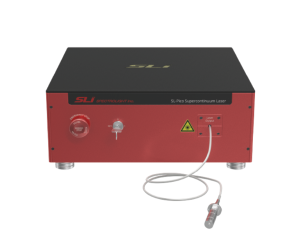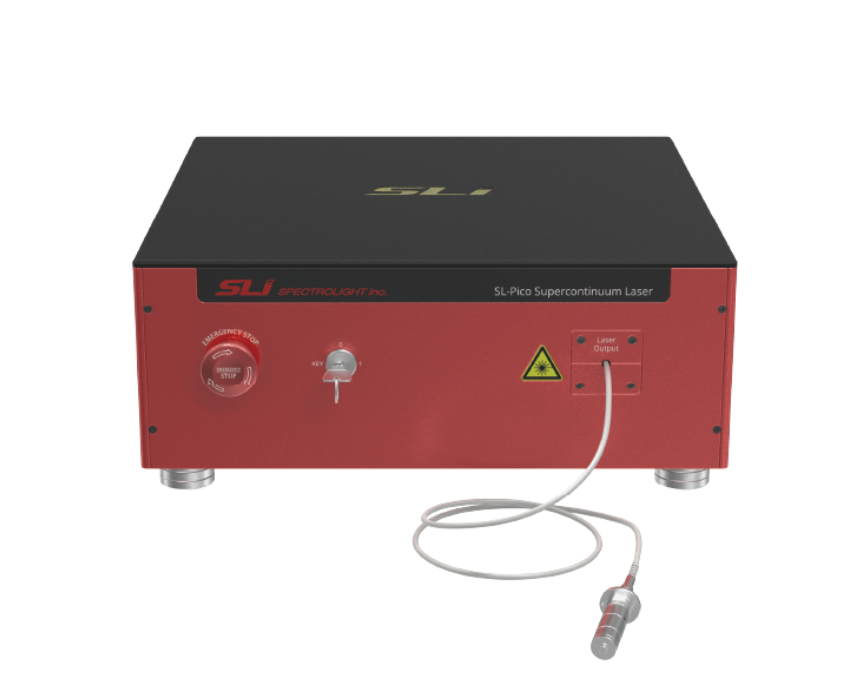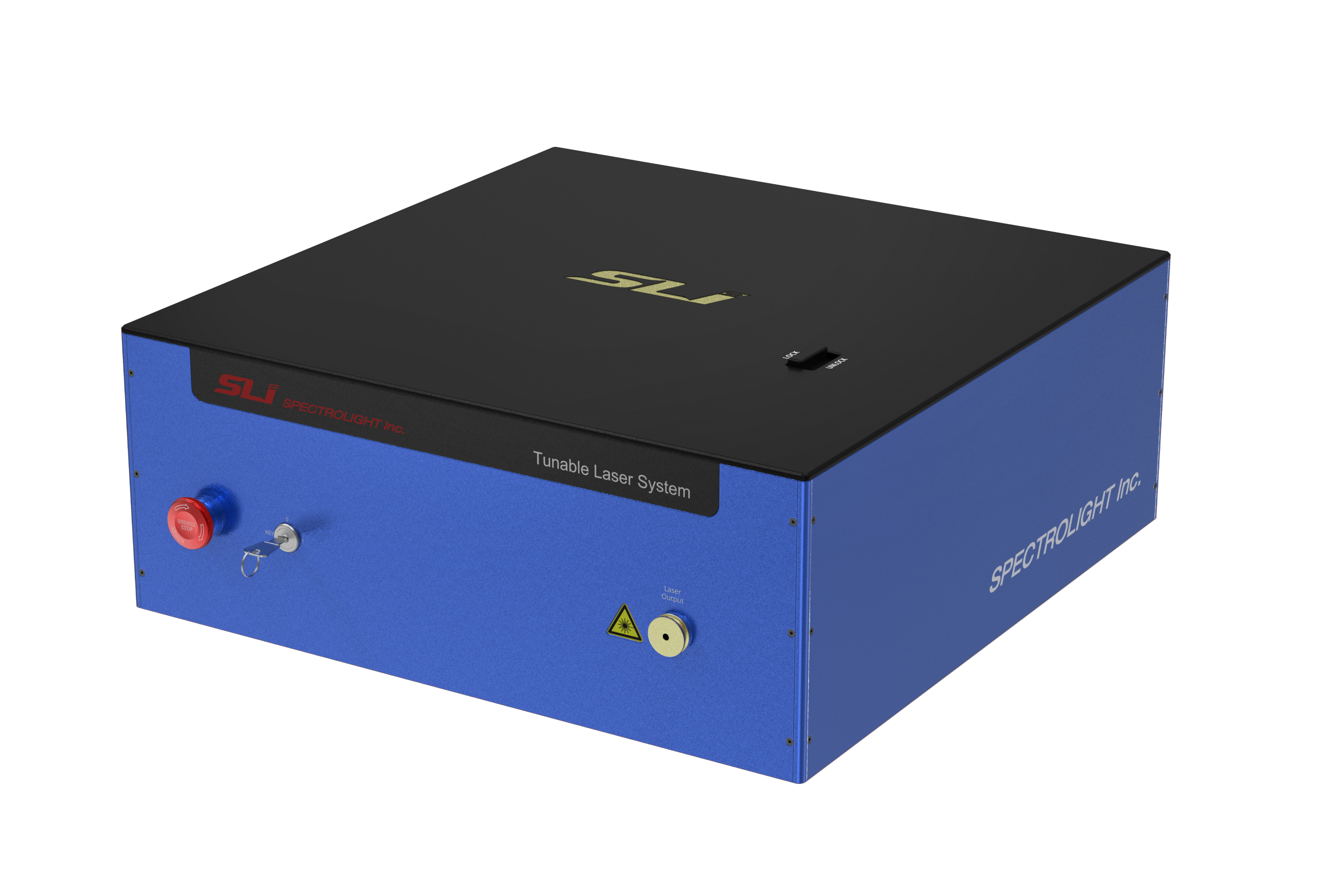SL-Pico
Supercontinuum Laser, ps pulsed, White Light, 410-2400nm, up to 200MHz
Key Features:
- High-power up to 8W (avg.)
- Ultra-broadband spectral output ≈ 410-2400 nm
- Highly stable power output
- Upgradable to a broadband tunable laser system
- Rep Rate: Fixed (5, 10, 20, 40, 80MHz) or variable (10kHz-40 or 200MHz)
- 2024 Review of Spectroscopic Instrumentation Highlighted Product
Choose from seven base models with varying output power and fixed or variable rep. rate options. See our Datasheet below!
There are many configurations and options available. If you do not see exactly what you need below, please contact us!
Need Quantities? Have a question? Looking for a quote?
POPULAR CONFIGURATIONS:
Picture |
Part Number |
Part Description |
Datasheet |
|
|---|---|---|---|---|

|
SL10 |
Supercontinuum laser, 450-2400 nm white output, 1 W total avg. power (100 mW – VIS), <300 ps pulse width, 5 MHz rep rate |
|
Get Quote |

|
SLM10 |
Supercontinuum laser, 410-2400 nm white output, 1 W total avg. power (250 mW – VIS), <50 ps pulse width, 10 MHz rep rate |
|
Get Quote |

|
SLM20 |
Supercontinuum laser, 410-2400 nm white output, 2 W total avg. power (500 mW – VIS), <50 ps pulse width, 20 MHz rep rate |
|
Get Quote |

|
SLM40 |
Supercontinuum laser, 410-2400 nm white output, 4 W total avg. power (1 W – VIS), <50 ps pulse width, 40 MHz rep rate |
|
Get Quote |

|
SLM35V |
Supercontinuum laser, 410-2400 nm white output, 3.5 W total avg. power (1 W – VIS), <50 ps pulse width, 10 kHz – 40 MHz rep rate (adjustable) |
|
Get Quote |

|
SL80V |
Supercontinuum laser, 430-2400 nm white output, 8 W total avg. power (1 W – VIS), <300 ps pulse width, 10 kHz to 200 MHz rep rate (adjustable) |
|
Get Quote |

|
SLM70 |
Supercontinuum laser, 410-2400 nm white output, 7 W total avg. power (2 W – VIS), <50 ps pulse width, 80 MHz rep rate |
|
Get Quote |
The SL-Pico series of picosecond supercontinuum lasers is designed to meet the diverse and dynamic needs of cutting-edge research and industrial applications. These supercontinuum white lasers are highly regarded for their wide wavelength range and cost-effectiveness. The SL-Pico offers a spectral range from 410 to 2400 nm, has high power, is very stable, and is capable of delivering power up to 8 W. The SLM versions are mode-locked fiber lasers with a fixed rep. rate, and the SLMV versions have a tunable repetition rate (up to 40 or 200 MHz), ensuring compatibility with a wide range of devices and various applications like fluorescence microscopy, TCSP, hyperspectral imaging, semiconductor inspection, and much more!
Benefits:
- Very Stable, High Average Power: provides you with the range of power needed for a wide range of applications with consistent power output for consistent results
- Ultra-Broadband Spectral Output: ≈ 410-2400 nm wavelength output provides an excellent, broadband, white light source for various applications
- Repetition Rate Options: Choose a fixed repetition rate at 5, 10, 20, 40, or 80 MHz, or variable rep. rate from 10 kHz – 40 MHz or 200 MHz, depending on configuration
- Easy to Setup: Plug & Play system requires no alignments or adjustments allowing instant application
- Easily Upgradable: Connecting to the optional Flexible Wavelength selector is simple and allows for full tunability within a selected range: VIS, IR, SWIR, or choose a custom range
- Replace Old Technology: While older, simpler lamp-based light sources are relatively cheap, the advanced precision, collimation, and coherence of tunable laser-based light sources can help tackle modern applications with excellent results (when combined with Flexible Wavelength Selector)
If you have any questions or need more information, please contact us.

 SHIPS TODAY
SHIPS TODAY 



